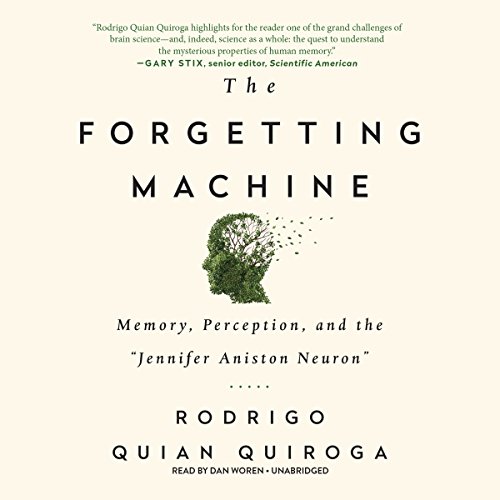What do you think?
Rate this book


Audible Audio
Published October 3, 2017
So how do we do it? How do we store all this information? The surprising answer is that we basically do not. We remember almost nothing. The idea that we remember a great deal of the subtleties and details of our experiences, as if we are playing back a movie, is nothing more than an illusion, a construct of the brain. And this is perhaps the greatest secret in the study of memory: the astounding truth that, starting from very little information, the brain generates a reality and a past that make us who we are, despite the fact that this past, this collection of memories, is extremely slippery; despite the fact that the mere act of bringing a memory to our consciousness inevitably changes it; despite the fact that what underlies my awareness of a unique, immutable "self" that makes me who I am is constantly changing.
Sight does not function like a camera. On the contrary, the brain selects a tiny amount of information and processes it redundantly and in parallel in order to extract meaning. Unlike a camera which stores with equal resolution each bit of visual information site is highly directed. It is focused on capturing relevant information to convey meaning, not fidelity. After all, I am not interested in discerning the exact details of thousands of hairs in yellow contrasting with others in black; I just want to know it is a tiger and flee quickly. The processing of visual information in the brain is then much more sophisticated and complex than what a computer does to an image; it is nothing less than the result of millions of years of evolution.
We've seen that the brain selects and processes relatively little of the information available to it, and does so in a redundant way aimed not at scrupulous reproduction but at the extraction of meaning. In this sense, the mind of a savant mirrors more closely the behavior of a computer. Like a computer, the brain of the savant does not filter information but simply records every detail literally, without constructing meaning and so without, eventually, being able to understand.(...)
This is because the brain's machinery stores information in a very redundant way-with sets of neurons encoding, in parallel, specific aspects of the same piece of information-in order to derive meaning. This is precisely what distinguishes our human brains from flash drives or computers. A computer's hard drive can store and faithfully reproduce scores of text passages, photographs, or videos, but it cannot understand them. The human brain, on the other hand, concentrates its resources on attributing meaning to the paltry amount of information that reaches it from the senses.
Sound, as we experience it, is created by variations in air pressure. Strictly speaking, sound doesn't even exist as such in the atmosphere. Sound-the voice of a friend, a nocturne by Chopin, the crack of a thunderbolt-is a construction generated by the brain from the vibrations of small hairs in the ear that transform pressure variations into nerve impulses. If a Martian were to materialize suddenly upon our planet, it would be pointless to try to talk to him, and not because he would not understand Spanish, English, or Arabic: he would simply be unable to hear, to perceive or interpret subtle variations in air pressure, because there is no air on Mars and he would not have evolved structures like the ear.
Just as with sound, color doesn't exist as such around us; what actually exist are electromagnetic waves that strike our retina, and color is just our interpretation of these. In the initial chapters we gained a general understanding of the way the brain extracts meaning from what we see. As Aristotle and, later, Aquinas argued, we generate images based on external stimuli, and these images in turn give rise to the formation of concepts, which are the basic units of human thought. But what exactly is the process that generates these constructions of increasing sophistication? What is its physical, neural basis? This fascinating topic has been dominant in neuroscience in recent decades, and I have been lucky enough to be involved in investigating it.
Neuroscientists do not consider the mind an autonomous entity able to reason and make decisions on its own. On the contrary they take the position that the mind is physical, cerebral activity.
This non-Cartesian vision invites consideration of several subtleties of the sort that are philosophers' bread and butter. (These subtleties are largely ignored by neuroscientists, who focus on the study of correlations between neural and mental processes, and leave such debates to others.) For some philosophers, just as electricity is the motion of electrons and temperature is the kinetic energy of molecules, so the mind is the activity of neurons. This is known as materialism, and it recognizes no distinction between mind and brain. It is worth pointing out that materialism does not say that the mind is the product of the activity of neurons, but rather that it is that activity. To say that the mind is the product of the brain's activity is, in fact, a form of dualism, since it assigns distinct entities to the mind and the brain; materialism, on the other hand, holds that the material is all there is.